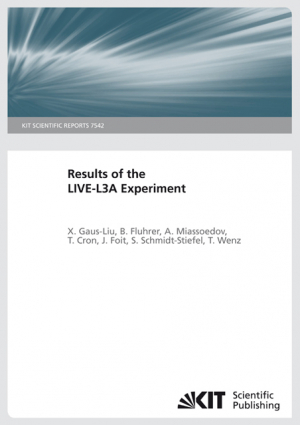Xiaoyang Gaus-Liu
Results of the LIVE-L3A experiment
Reihe: KIT Scientific ReportsThe sequence of a postulated core melt down accident in the reactor pressure vessel (RPV) of a pressurised water reactor (PWR) involves a large number of complex physical and chemical phenomena. The main objective of the LIVE program is to study the core melt phe-nomena during the late phase of core melt progression in the RPV both experimentally in large-scale 3D geometry in supporting separate-effects tests and analytically using CFD codes in order to provide a reasonable estimate of the remaining uncertainty band under the aspect of safety assessment. The main objective of the LIVE-L3A experiment was to investigate the behaviour of the mol-ten pool and the formation of the crust at the melt/vessel wall interface influenced by the melt relocation position and initial cooling conditions. The test conditions in the LIVE- L3A test were similar to the LIVE-L3 test except the initial cooling conditions. In both tests the melt was poured near to the vessel wall. In the LIVE-L3 test the vessel was initially cooled by air and then by water; in the LIVE-L3A test the vessel was cooled by water already at the start of the experiment. The information obtained in the test includes horizontal and vertical heat flux distribution through the RPV wall, crust growth velocity and dependence of the crust properties on the crust growth velocity and cooling conditions. Supporting post-test analysis contributes to the characterization of solidification processes of binary non-eutectic melts. The results of the LIVE-L3 and LIVE-L3A tests are compared in order to characterize the impact of transient cooling condition on the crust solidification characteristics and melt pool behaviour including interface temperature, time to reach thermal hydraulic steady-state and the steady-state heat flux distribution. The report summarizes the objectives of the LIVE program and presents the main results obtained in the LIVE-L3A test compared to the LIVE-L3 test.

